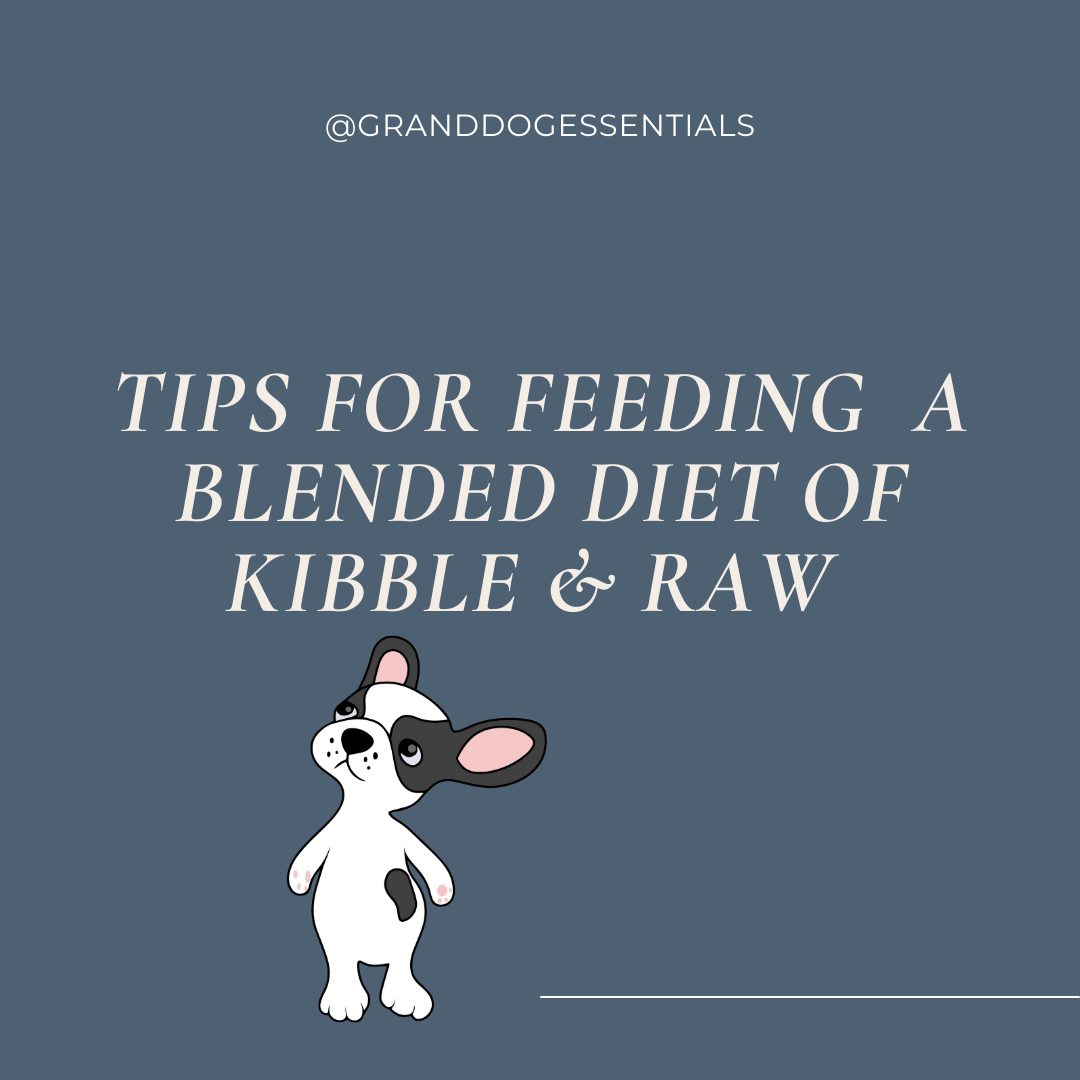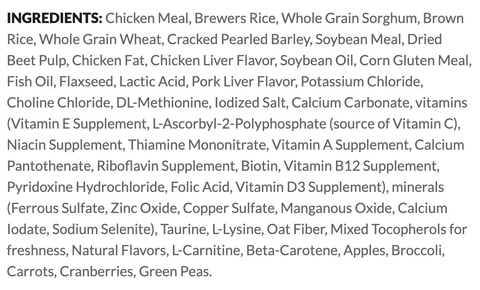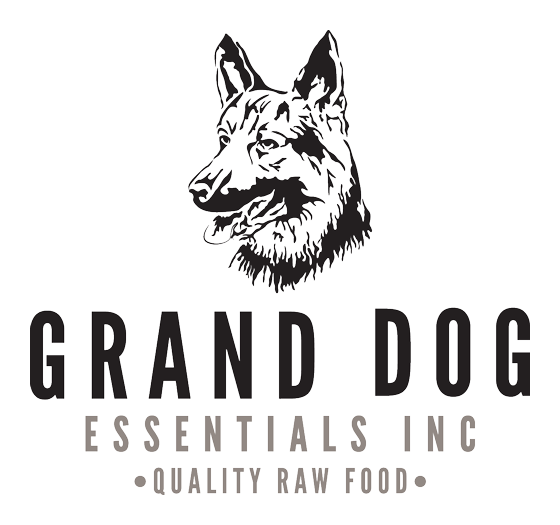Tips for Feeding a Blended Diet of Kibble and Raw Dog food
August 16, 2022 – Amanda Monsma

This is a hot topic in the dog food world. To mix or not to mix kibble and raw dog food.
At Grand Dog Essentials, we believe the raw dog food diet is the best option for our furry family members. Nothing can compare to the natural nutrients that come from a fresh food diet.
With that being said, there is always nuance to every conversation and mixing kibble and raw is a reality for some pet parents. We don't want to ignore that fact and contribute to the shame that is often pushed onto those families for deciding to do so. (I'm looking at you Facebook groups!)
The decision to mix is personal and can be due to budget, health reasons, lifestyle, or a general concern that raw isn't providing all the nutrition their pups need. Every family dynamic is different. What works for some dogs might not work for others.
"Replacing as little as 10% of your dog's daily processed pet food (kibble) with fresh food creates positive changes in a dog's body."
The Forever Dog, Rodney Habib & Dr. Karen Becker
I personally feel that some fresh food is better than none at all. So if mixing kibble and raw dog food is a reality for you, you do you! And if raw dog food is completely out of the question for you at this time, some of these tips work well for boosting the kibble bowl. We have included some additional kibble bowl tips at the end.
LET'S BEGIN!
Tip # 1: Feed Kibble & Raw Separately
While there isn't substantial research to back this up, some people believe that raw and kibble should be fed separately. Kibble tends to be higher in starch and vegetable protein content while raw is high in quality protein and fat. Due to the construction of each, your dog might digest each one differently and benefit from eating each option separate from the other.
Begin by feeding one option in the morning and the second in the afternoon/evening. As time goes on, your dog may adjust and feeding both at one time becomes an option for them. Dogs who tend to have sensitive stomachs might benefit the most from the separation of kibble and raw.
Tip # 2: Add Digestive Enzymes & Probiotics
Cooked food can inhibit natural enzyme production. Extra digestive enzymes through supplementation will help replenish your dogs enzymes and help break down the high starch content in kibble. This will be especially important for older dogs as age can play a factor in enzyme production.
A healthy supply of good bacteria (probiotics) in the gut crowds out the bad bacteria and ensures your dog's immune and digestive system is working as it should.
We recommend daily supplementation using Four Leaf Rover Digest as it contains both enzymes and probiotics.
READ: Probiotics & Prebiotics: Why they are essential for your dogs health
Tip # 3: Serve Kibble with Fresh Food Toppers
Consider adding fresh fruit, vegetables, raw eggs, bone broth, or raw fermented goat milk , sardines and/or Green Lipped Mussel Oil to the kibble. Mix and match from day to day so your pup is getting a variety.
The broth and kefir provide some hydration to the dry food along with added benefits of additional probiotics from the kefir and gut soothing nutrition from the broth.
Eggs provide vitamins & minerals like Vitamin A & B12, Riboflavin, Folate, Iron, & Selenium. The raw egg shell provides a natural source of calcium which is also essential in a dogs diet.
Many of the amino acids included in kibble will be in synthetic form. Synthetic amino acids will be included in the ingredient list with a "L" or "DL" in front of it. Raw eggs provide a fresh source of all of the essential amino acid dogs require in their diet. Add one egg a minimum two times a week or everyday.
Fruit/veggies provide a wide array of nutrients & natural enzymes along with some hydration to the bowl. The vegetables also provide pre-biotics in your dogs diet which will work to feed the good bacteria you are serving. Probiotics need pre-biotics in order to grow and thrive.
Some fruits and vegetables I love to serve:
Carrots, spinach, asparagus, blueberries, raspberries, cranberries, mushrooms, kale, broccoli, cauliflower, broccoli sprouts, green beans, peppers, apples, pears.
REMEMBER: For optimal digestion, it's best to lightly cook, puree, or ferment the vegetables prior to feeding them to your dog.
Fruit and vegetables can be fed every day, no more than 10-20% of your dog's daily intake.
READ: Supplements to Enhance a Raw Dog Food Diet
Tip # 4: Quality Kibble
Source a kibble that uses as much meat protein as possible. When you are able, avoid kibble that has a long list of vegetable proteins and starches.
So what do you look for? Ideally the first 2-3 ingredients are natural meat proteins and not just from protein meal. Take a look at this ingredient list from Hill's™ Science Diet™ Adult Healthy Mobility™ dog food:

The only protein listed is chicken meal followed by a long list of vegetable proteins. Chicken meal is a powdered form of chicken once it's been cooked at high temperatures. The high temperatures of the cooking process extracts much of the nutrients from the chicken. The cooking process along with the fact that there are no animal organs included means that much of the nutrients from this food is from synthetic forms of vitamins and minerals.
Here is an example of one kibble ingredient list that uses more natural protein options from Carne4 Chicken Dog Food:

This option is a step up as it includes fresh chicken (not a meal) and some liver. In my opinion, this option is still missing some items like calcium (other than what comes from the eggs) and a wider variety of organs. If this kibble were to be fed, I would probably recommend feeding extra bone and organs with the raw meal.
The take away? Read the ingredient lists. Become familiar with the different kibble options and supplement the raw meal to make up for their short comings.
If you do feed a kibble that is high in starch, I would recommend not including additional starch with your raw meals. Stick with plain protein options that focus on the foundation: meat, bone, organs.
READ: The Best Dry Dog Food According to Dogs Naturally Magazine
Tip # 5: Variety, Variety, VARIETY
Have you ever gotten sick of something you once loved to eat? Variety prevents food boredom. Just like humans, dogs needs variety to keep the excitement alive with food.
Kibble companies like to exclaim their food is all your dog needs, but the truth is any diet any diet you feed your dog should include a variety. This goes for kibble or raw dog food. Feeding a variety exposes your dog to a wide array of nutrients.
Different meat sources has different nutrient profiles. For example, the amino acid break down of chicken is different than beef.
There is also a higher amount of Omega 6 in chicken dog food than there is in beef dog food. The balance of Omega 6 & 3 is also required in a dogs diet to help maintain a proper inflammation response.
Variety can also prevent over exposure to some nutrients like Vitamin D. Vitamin D is a crucial part of a dog's diet. Too little can cause health issues, but too much can also be dangerous for our dogs. Kibble companies have been notorious about adding too much Vitamin D which has resulted in illness and death for many dogs.
INSTAGRAM: The Importance of Vitamin D for your Dog
Variety from a young age helps prevent allergies/intolerances. If you have a child, you know that many people will recommend exposing your child to allergens from a young age to help prevent allergies. The same is true for dogs. If your dog hasn't been exposed to a variety from the start, their body might react to new foods when they are older, viewing it as foreign and something that it needs to fight against.
Can't do raw at the moment?
If raw isn't possible at the moment or if you need to put it on pause, I recommend feeding at least some fresh food along with the kibble. The above tips work well for a kibble only diet as well.
Below are some additional options I would recommend adding to your kibble bowl.
Fish/Fish Oil:
While some kibble does include Omega 3, the cooking process and oxidization that occurs when you open the bag means the Omega 3 won't be potent enough for your dog to get the anti-inflammatory benefits. Fish oil is very unstable and if not handled properly can go rancid very easily. Rancid oil will promote inflammation instead of fighting against it.
Add in sardines, herring, or Safe Sea Green Lipped Mussel Oil 2-3 times a week to ensure your pup is getting a balance between their Omega 6 & 3.
Add 2 to 3 times a week. If feeding sardines, make sure they are packed in water with no added ingredients.
Organs:
Organs are the most nutrient dense part of the animal and one of the best ways to provide your pup with natural vitamins and minerals. Organs are packed with Vitamin A, C, D, E, K, B-vitamins, folate, phosphorus, iron, manganese, iodine, and zinc. Each organ has their own unique nutrient profile, so feeding a variety is ideal for any dog's diet.
If organ meat makes you uneasy or you have troubles sourcing a variety, try it in powdered form using Guts & Glory.
Add minimum 2 times a week or everyday. Organs should be 10 - 25% of your dog's daily intake (or use the serving recommendation if using Guts & Glory)
Let us know!
Do you mix kibble and raw dog food? What other tips would you have for the #granddograwpack?
Amanda Monsma (she/her)
amandam@granddog.ca
If you liked this, you might also like.....
Why is my dog refusing their food?
How to Thaw and Store Raw Dog Food
Disclaimer: All information presented on this website is for informational and/or educational purposes only and based on our experience and those shared by our clients. These statements have not been evaluated by a veterinarian. This website is not intended to diagnose, treat, cure, or prevent any disease and is not intended to be a substitute or replacement for any medical treatment. Please seek the advice of a holistic veterinarian for your dog’s specific health concerns.

2 comments
Hi Melanie! Thanks so much for taking the time to check out our post! I would start by adding in a little kibble with the raw meals as you mentioned and then slowly increasing to the desired amount. If the intent is to feed kibble in the morning, add in kibble in the morning and then start to reduce the raw in the AM and increasing the kibble amount. It’s hard to say how your pup will respond, so there may be some undesirable poops at first, but over time their body may adjust to it. But if they were having issues with stool before raw, you might find that those issues come back depending on the kibble you use.
I hope this helps! Good luck!
Amanda Monsma (she/her)
Thanks for this great info!
Switched my dogs to raw but am considering am kibble/pm raw for cost reasons.
I see lots of articles on how to switch from one to the other but not both.
Is it good enough to incorporate some kibble and increase to 50% total then start 100% kibble in the morning and 100% raw at night?
All my dogs transitioned to raw without any stomach upset but I don’t want to mess up their lovely poops.
Thanks!